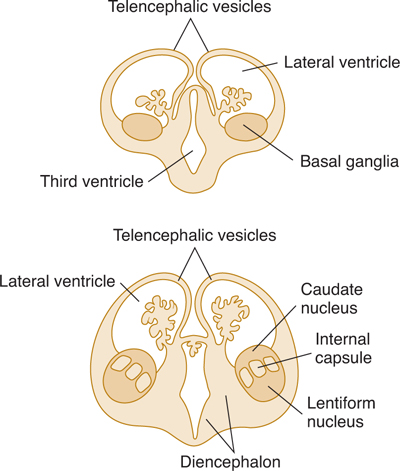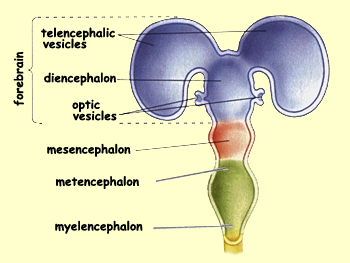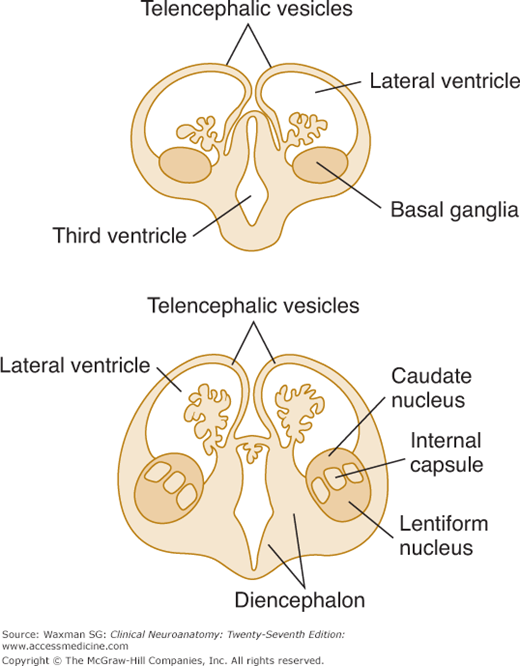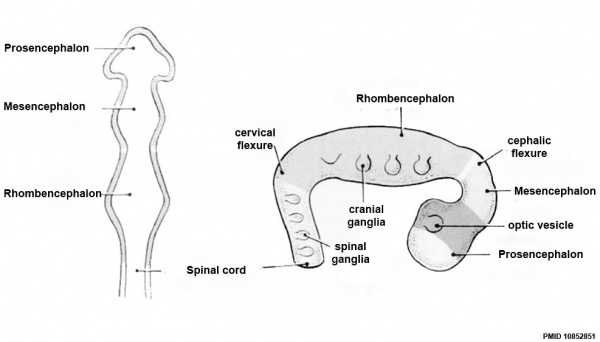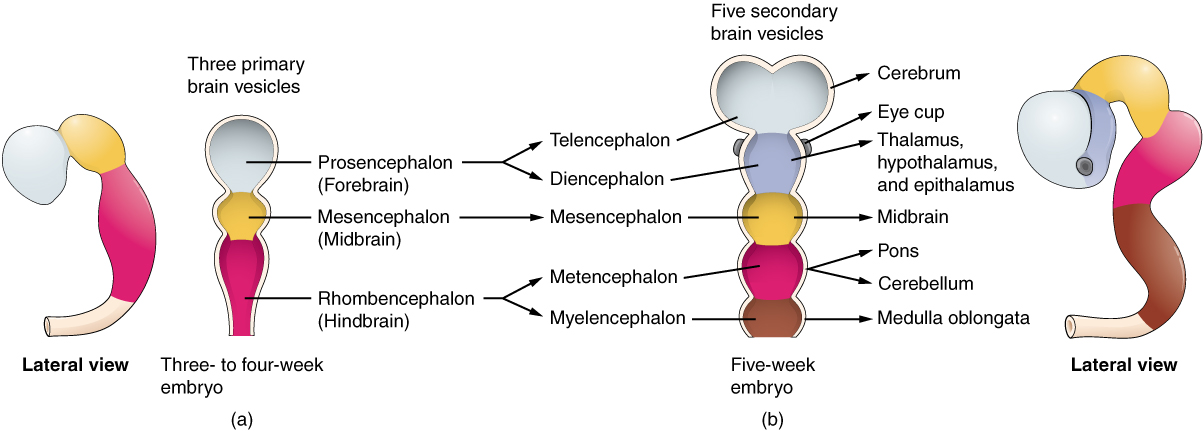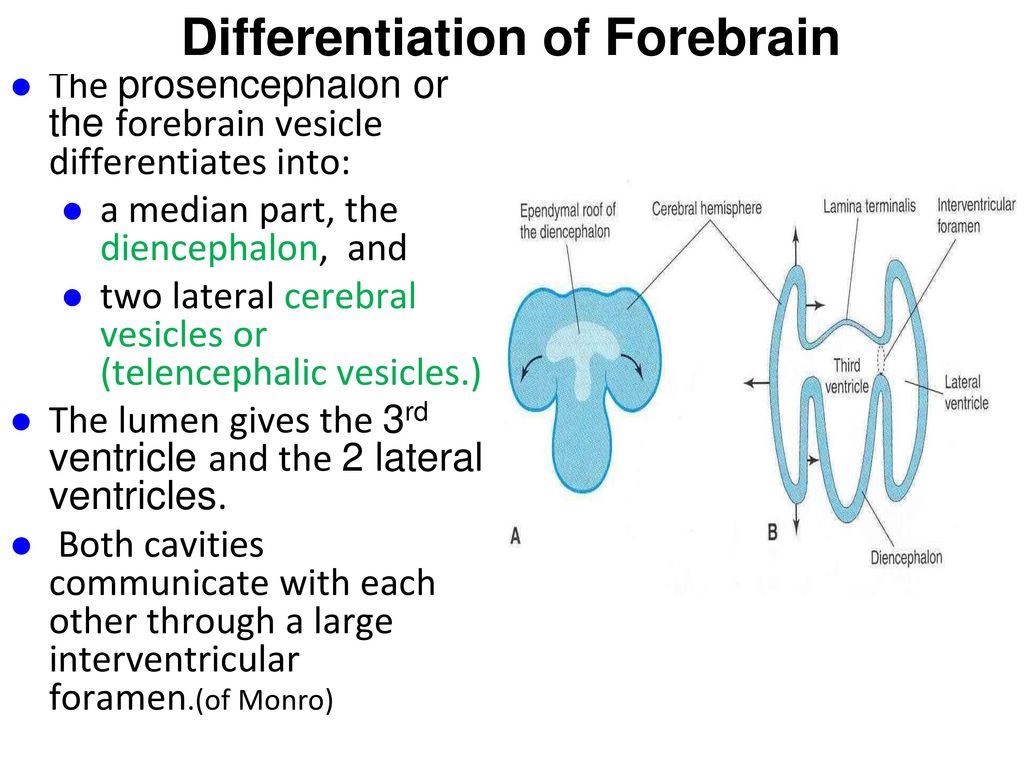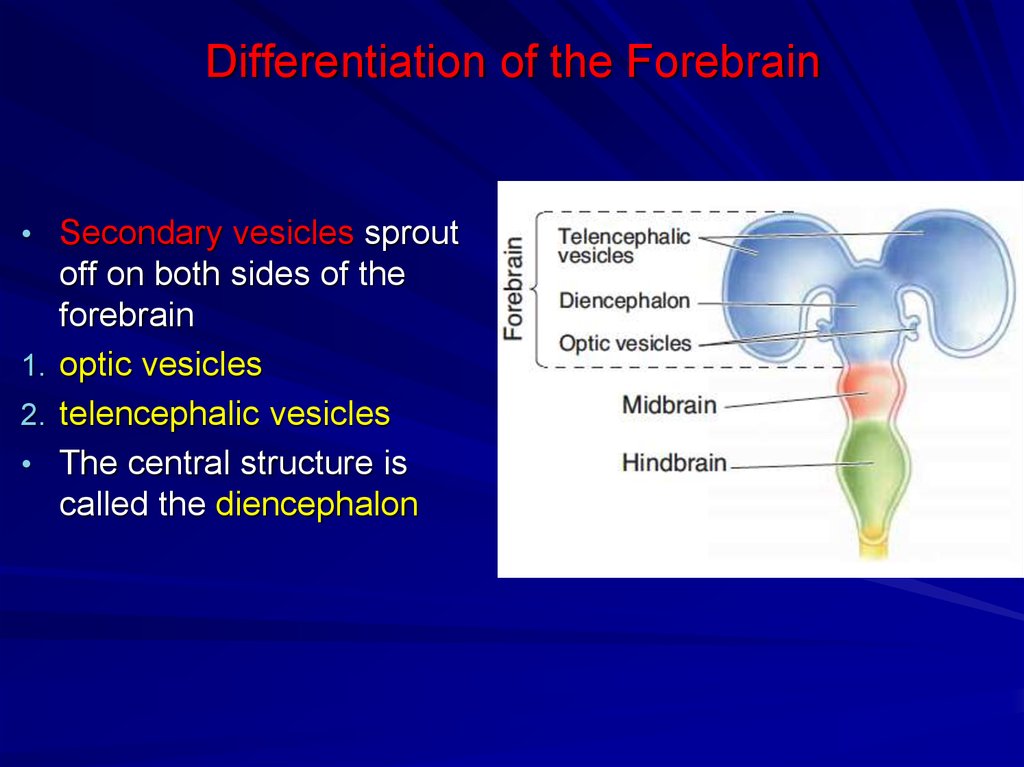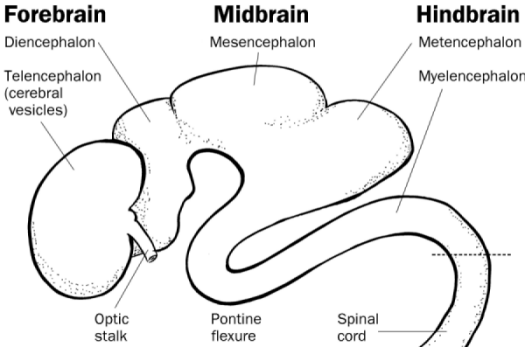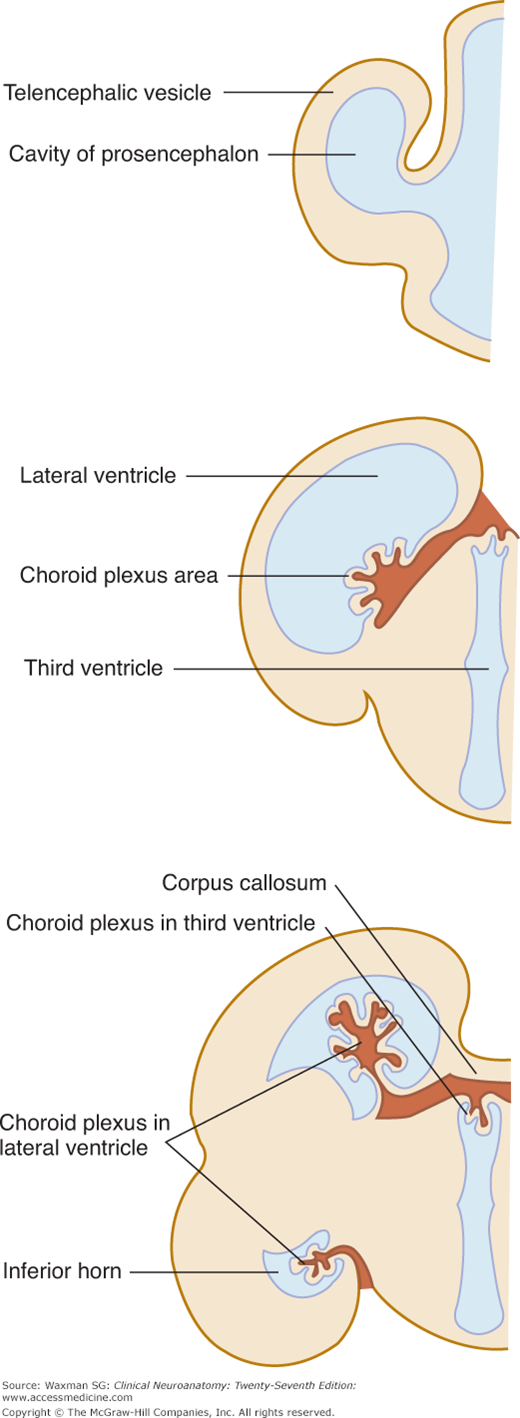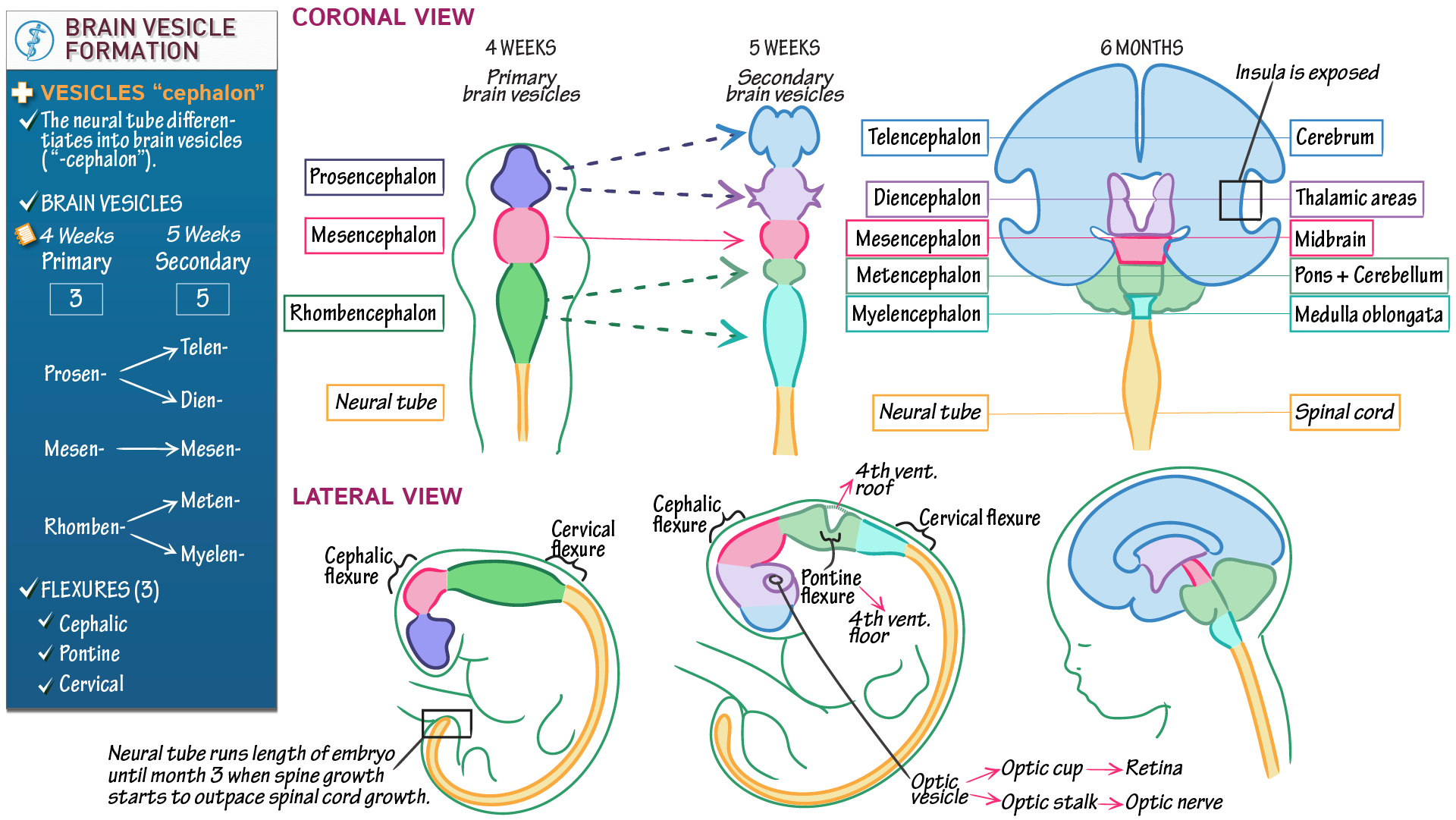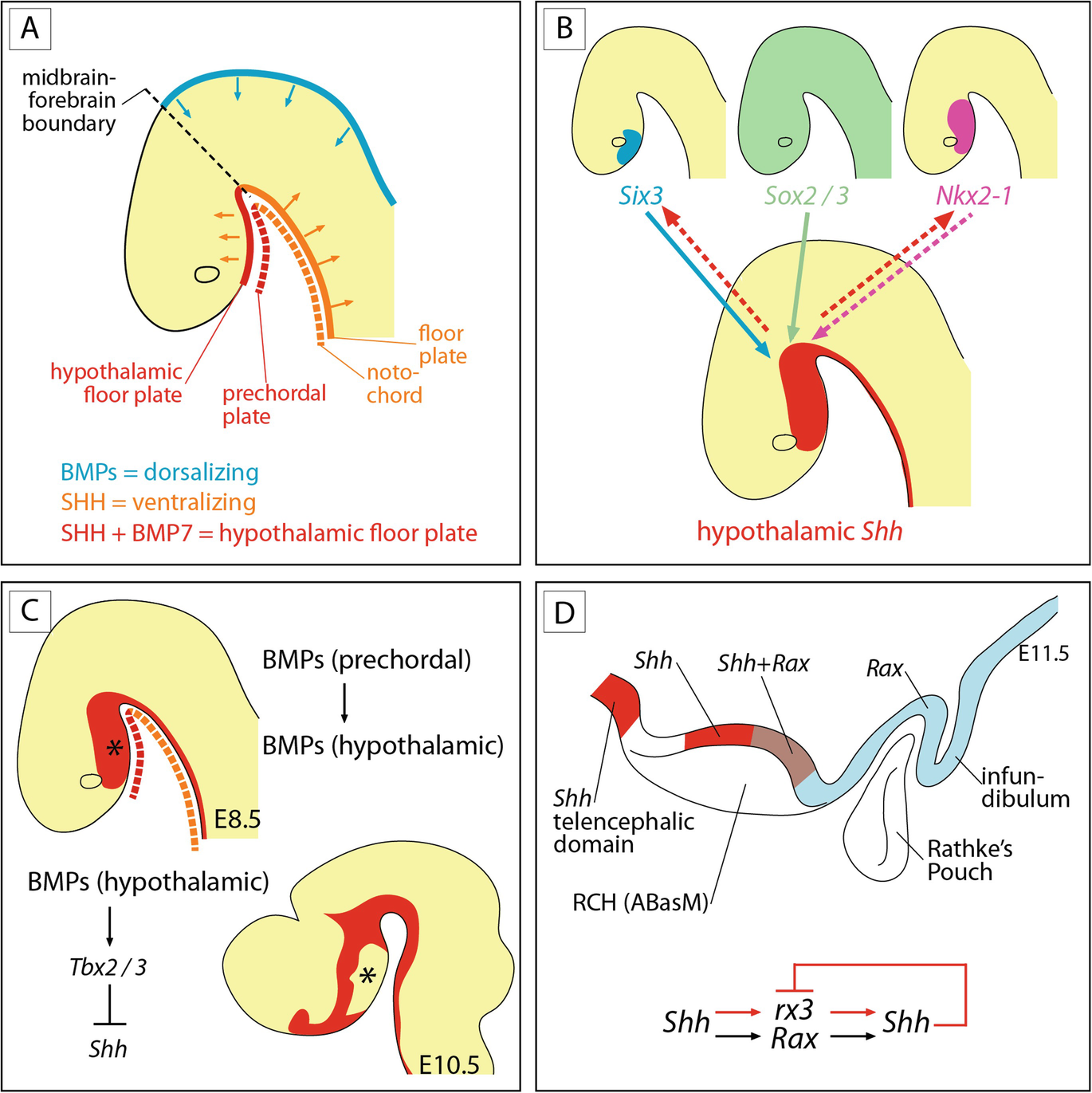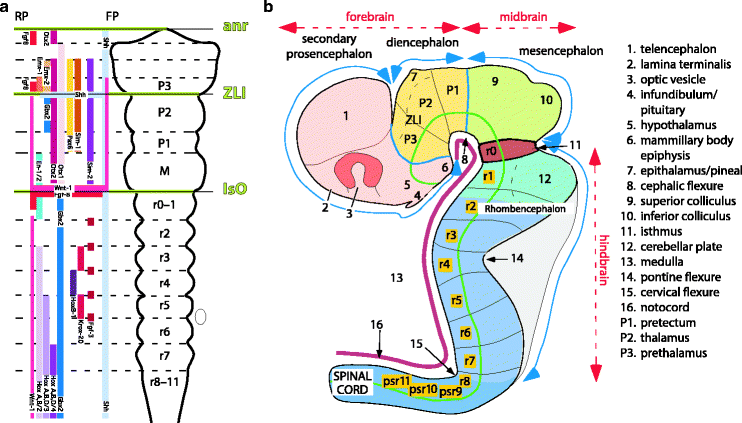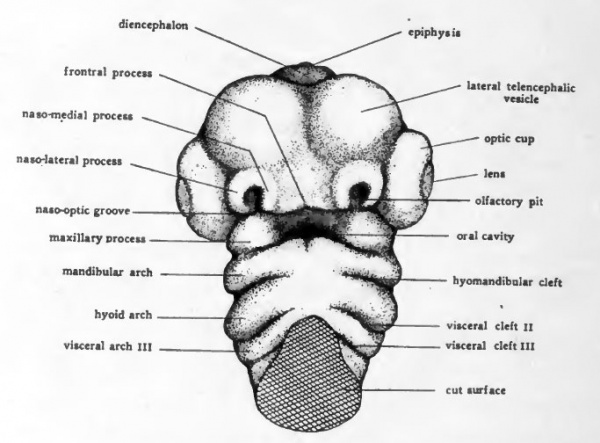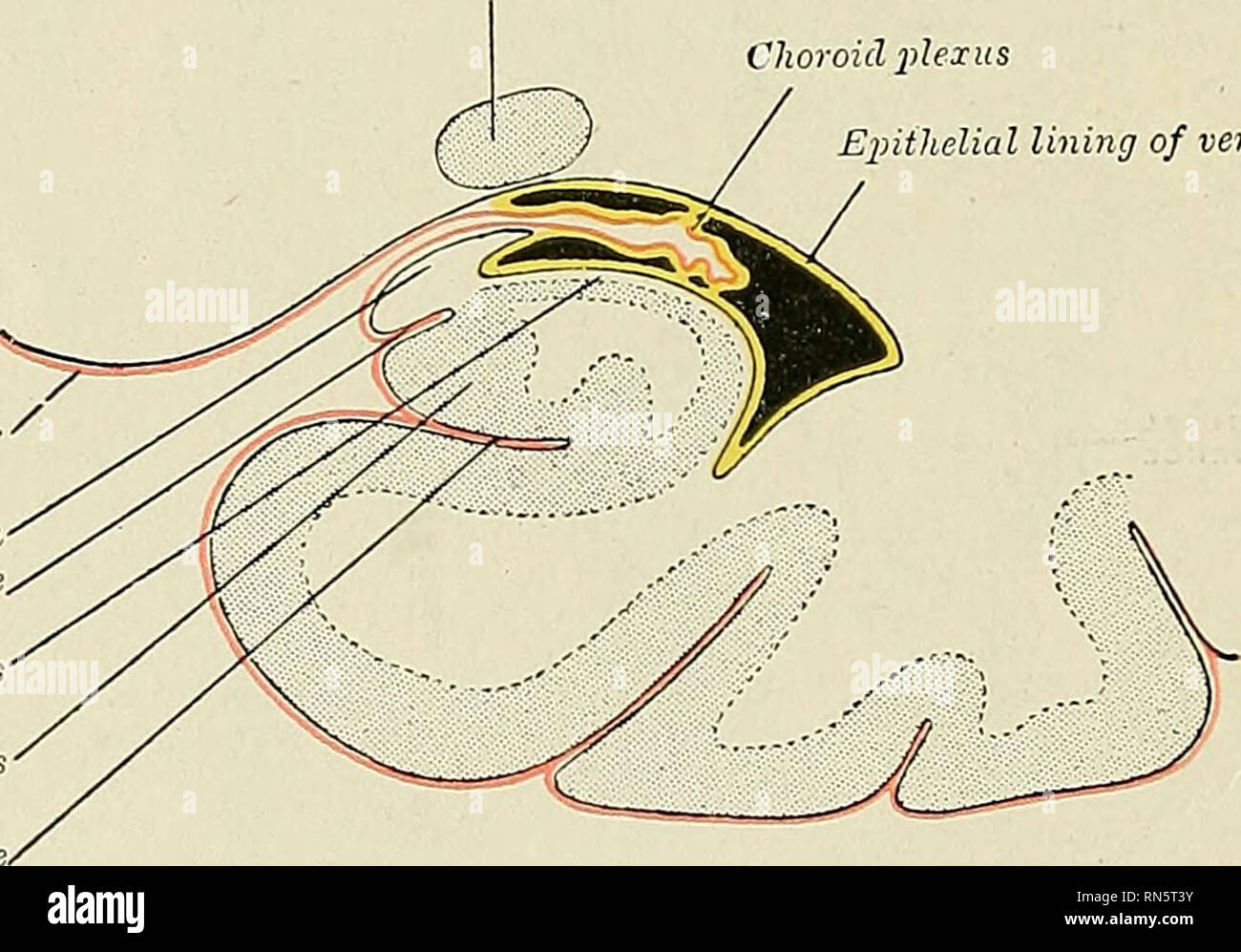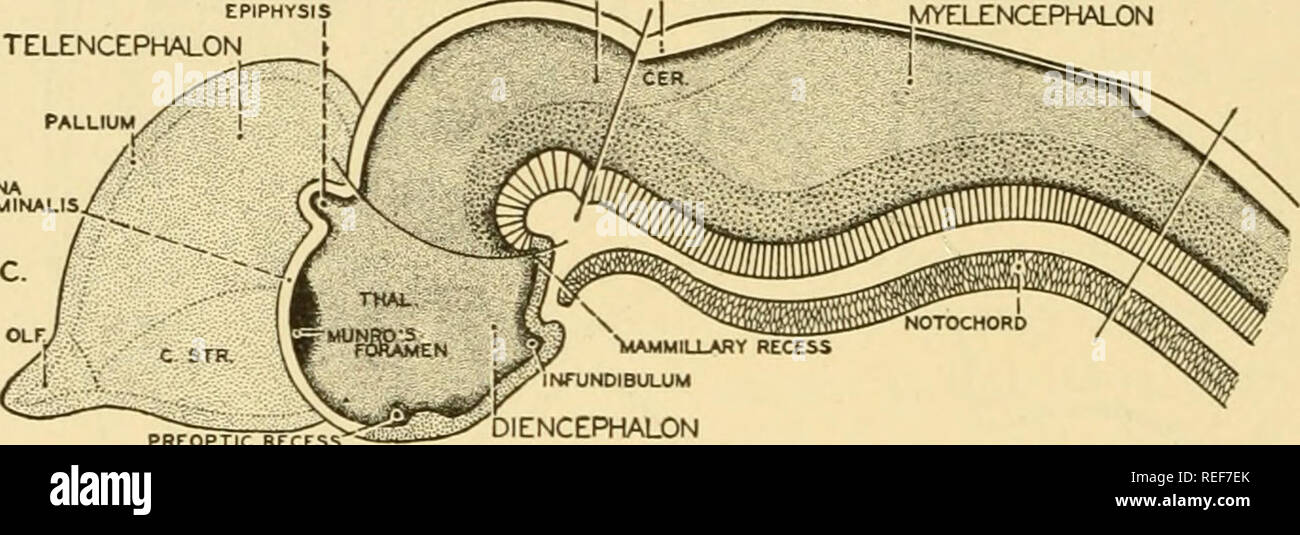The caudate putamen develops from neuroblasts of the floor of the developing telencephalic vesicle called the striatal ridge while the globus pallidus originates from neuroblasts in the wall of the 3rd ventricle of the diencephalon.
Floor of the telencephalic vesicle.
Another pair of vesicles sprout off the ventral surfaces producing olfactory bulbs smell 3.
The caudate putamen develops from neuroblasts of the floor of the developing telencephalic vesicle called the striatal ridge while the globus pallidus originates from neuroblasts in the wall of the 3rd ventricle of the diencephalon.
The cerebrum or telencephalon is the largest part of the brain containing the cerebral cortex of the two cerebral hemispheres as well as several subcortical structures including the hippocampus basal ganglia and olfactory bulb in the human brain the cerebrum is the uppermost region of the central nervous system the cerebrum develops prenatally from the forebrain prosencephalon.
The telencephalon eventually differentiates to become the olfactory bulbs anteriorly the cerebral cortex dorsally and the basal ganglia ventrally.
The diencephalon is one of the main vesicles of the brain formed during.
Pallidal neuroblasts eventually migrate laterally to join the caudate putamen.
Cells of the walls of the telencephalon divide and differentiate into various structures 4.
The floor of the developing.
The telencephalic vesicles become the cerebral hemispheres and their cavities become the paired lateral ventricles of the adult brain.
We found that the periventricular vessels in the ventral telencephalon originated from a prominent basal vessel located deep on the floor of the telencephalic vesicle in the basal ganglia primordium.
Both parts of the corpus striatum.
Rapid proliferation of telencephalic cells results in the disproportionate swelling of the telencephalon which forms a pair of fluid filled vesicles telencephalic vesicles.
Pallidal neuroblasts eventually migrate laterally to join the caudate putamen.
The diencephalon is a division of the forebrain embryonic prosencephalon and is situated between the telencephalon and the midbrain embryonic mesencephalon it consists of structures that are on either side of the third ventricle including the thalamus the hypothalamus the epithalamus and the subthalamus.
White matter systems develops.
The hemispheres undergo enormous enlargement in their later development and extend dorsally and posteriorly as well as anteriorly eventually covering the entire diencephalon and mesencephalon under their.
As the telencephalic vesicles increase in size they completely cover the lateral aspect of diencephalon and eventually fuse with it.

